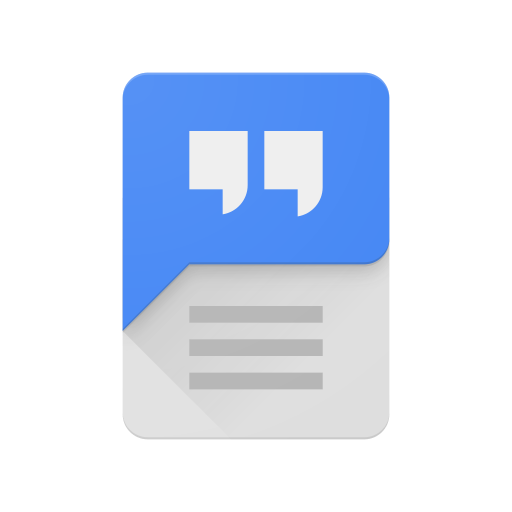Speech Recognition & Synthesis
About this app
Speech recognition and synthesis apps have revolutionized communication in the digital realm. They have enhanced communication for individuals with speech disabilities and improved accessibility for individuals with visual impairments, providing a multitude of advantages.
This article will delve into the functionality of speech recognition and synthesis apps, highlighting the leading apps on the market, their precision, constraints, and guidance on selecting the most suitable option. Venture into the world of speech recognition and synthesis technology to gain a comprehensive understanding.
What is Speech Recognition and Synthesis App?
A Speech Recognition and Synthesis App is a technological application that allows users to convert spoken language into text (speech-to-text) and text into spoken words (text-to-speech). These advanced applications leverage cutting-edge technology to enable seamless communication between users and devices.
By utilizing complex algorithms and machine learning processes, speech recognition apps can accurately transcribe spoken words with high precision, revolutionizing the way we interact with technology. Similarly, text-to-speech functionality in these apps involves converting written text into natural-sounding speech, which is particularly beneficial for those with visual impairments or in hands-free situations. The user-friendly interfaces of these apps make them accessible to a wide range of users, enhancing productivity and ease of communication in various settings.
How Does Speech Recognition and Synthesis App Work?
Speech Recognition and Synthesis Apps utilize advanced technologies such as Artificial Intelligence (AI) and machine learning to process and interpret spoken language. These apps analyze voice commands and use natural language processing to accurately convert speech into text and vice versa.
By employing AI algorithms, these apps can recognize speech patterns, differentiate accents, and adjust to individual speaking styles for improved accuracy. Machine learning is essential in enhancing the app's speech recognition capabilities through continuous learning from user interactions and feedback.
Natural language processing enables these apps to comprehend context, syntax, and semantics, allowing them to generate coherent and contextually relevant responses. The seamless incorporation of these innovative technologies has transformed the way we engage with technology and communicate effectively across various scenarios.
What Are the Benefits of Using Speech Recognition and Synthesis App?
Using a Speech Recognition and Synthesis App offers numerous benefits, such as enhanced usability, improved functionality, seamless performance, user-friendly interfaces, and intuitive voice command capabilities. These apps transform communication practices by providing efficient and effective tools for text and speech interactions.
By utilizing these advanced technologies, users can dictate text messages, emails, notes, or conduct web searches with ease, eliminating the need for typing. The intuitive design of these apps allows users to navigate effortlessly, boosting productivity and convenience. The high accuracy of speech recognition ensures minimal errors, making them suitable for professionals, students, or individuals on-the-go. Whether in a noisy environment or while multitasking, these apps adapt seamlessly, recognizing and transcribing speech accurately, thereby facilitating faster and smoother communication experiences.
1. Improves Communication for Individuals with Speech Disabilities
Speech Recognition and Synthesis Apps are essential tools for individuals with speech disabilities. These apps offer voice modulation, accurate speaker identification, and high speech quality, enabling users to communicate effectively and engage with others.
The voice modulation features in these apps allow users to adjust the tone and pitch of their speech, improving their expressiveness. Speaker identification technology permits users to customize their interactions by recognizing various voices. Additionally, speech quality enhancements ensure precise translation and conveyance of users' words. Utilizing these advanced features give the power tos individuals with speech disabilities to overcome communication challenges and participate in inclusive and meaningful conversations.
2. Increases Efficiency in Writing and Typing
The use of Speech Recognition and Synthesis Apps offers a significant increase in efficiency for writing and typing tasks. These apps enable dictation and transcription with high text accuracy, streamlining the conversion of spoken words into written text.
This functionality not only saves time but also reduces the occurrence of errors typically associated with manual typing. By smoothly converting speech to text, users can easily capture their thoughts and ideas without concerns about typos or formatting. The user-friendly interface of these apps makes them accessible to a broad range of individuals, encouraging their use in various settings. The impact of speech recognition and synthesis apps on productivity is considerable, transforming how content is created and text is generated.
3. Enhances Accessibility for People with Visual Impairments
Speech Recognition and Synthesis Apps are essential in improving accessibility for individuals with visual impairments. By providing language support and easy-to-use voice commands, these apps help visually impaired users effectively interact with digital content and communication tools.
The accuracy of speech recognition and synthesis apps in transcribing spoken words into text and delivering natural-sounding voice output is especially valuable for individuals who depend on audio aids. These apps not only assist in reading text aloud but also allow users to verbally compose messages, emails, and complete tasks without using their hands. The ongoing advancements in these technologies have resulted in smoother interactions, establishing an inclusive digital environment that promotes independence and productivity for individuals with visual impairments.
4. Facilitates Multitasking
Speech Recognition and Synthesis Apps facilitate multitasking by enabling users to control various tasks through voice commands in real-time. These apps give the power to users to navigate applications, compose messages, and perform actions concurrently, enhancing productivity and efficiency.
By utilizing voice control features, users can switch seamlessly between tasks without the need to manually interact with each application. This hands-free approach allows for a smoother workflow, especially when juggling multiple responsibilities.
With the ability to dictate messages, set reminders, and retrieve information through simple voice prompts, individuals can manage their to-do lists effectively while on the go. The real-time interaction provided by speech recognition and synthesis apps transforms the way users engage with technology, offering a more intuitive and efficient multitasking experience.
What Are the Top Speech Recognition and Synthesis Apps Available?
Some of the leading speech recognition and synthesis apps in the market are Dragon NaturallySpeaking, Google Assistant, Apple Siri, Amazon Alexa, and Microsoft Cortana. These apps have been assessed based on user feedback, industry recommendations, ratings, and comparisons to evaluate their performance and features.
Dragon NaturallySpeaking is recognized for its high accuracy and seamless integration with various applications, making it a preferred choice among professionals. Google Assistant excels in providing contextual information and smart suggestions. Apple Siri is widely popular for its intuitive interface and device synchronization capabilities. Amazon Alexa stands out for its wide range of third-party skills and integration with smart home devices. Microsoft Cortana offers robust productivity features and deep integration with Windows devices. Users can make informed decisions by considering the unique strengths of each app.
1. Dragon NaturallySpeaking
Dragon NaturallySpeaking is a popular Speech Recognition and Synthesis App recognized for its exceptional speech-to-text and text-to-speech capabilities. Known for its usability and performance, this app provides advanced features for smooth communication and task completion.
Users of Dragon NaturallySpeaking appreciate its ability to accurately convert spoken words into text and vice versa, making it a valuable tool for professionals, students, and individuals with accessibility needs. A key strength of this app is its reliable performance across various environments, ensuring high accuracy levels and minimal transcription errors. The user interface is intuitive, allowing for simple navigation and customization to suit individual preferences and improve the user experience.
2. Google Assistant
Google Assistant is recognized as a versatile virtual assistant known for its proficiency in voice commands and ability to support multiple languages. This application offers seamless compatibility across various devices and extensive language support, ultimately enhancing user interactions and productivity.
The voice recognition technology of Google Assistant allows users to initiate tasks, set reminders, make calls, and perform a variety of actions simply by speaking to their devices. Its capacity to comprehend different accents and dialects makes it a convenient tool for a diverse range of users. Additionally, the integration of Google Assistant with smart home devices give the power tos users to control their home environment through voice commands, introducing a new level of convenience and automation to their daily routines.
3. Apple Siri
Apple Siri is a voice recognition software known for its utilization of natural language processing to provide high usability and voice quality. The application is designed to effectively interpret and respond to user commands, enhancing the overall user experience.
Siri features a user-friendly interface that facilitates seamless voice interactions, allowing users to complete tasks effortlessly through voice commands alone. The software's advanced natural language processing capabilities enable it to understand context and offer precise responses. Siri's capacity to accommodate various accents and dialects enhances its usability, ensuring a smooth experience for a diverse user base. Its intuitive design and regular updates contribute to high levels of user satisfaction, establishing it as a dependable and effective voice recognition tool.
4. Amazon Alexa
Amazon Alexa is a speech recognition system known for its proficiency in voice commands and speaker identification. Emphasizing data privacy and security, the app aims to provide a secure and dependable user experience for voice interactions and data processing.
Along with basic commands, Amazon Alexa offers various functionalities like setting reminders, playing music, controlling smart home devices, and delivering real-time information. Its speaker identification feature allows multiple users to access personalized content based on their voice profiles, enhancing the user experience. Along with its capabilities, Amazon Alexa utilizes advanced encryption protocols to safeguard user data and interactions, fostering a sense of trust and confidence among users. Prioritizing privacy and security, Alexa aims to establish a standard for secure and seamless voice-enabled interactions.
5. Microsoft Cortana
Microsoft Cortana provides users with advanced voice control features and voice modulation options for creating personalized user experiences. The app offers versatile settings and customization capabilities, give the power toing users to customize their voice interactions and optimize their preferences.
Users have the ability to adjust Cortana's voice modulation to match their preferences, including options to modify pitch, tone, and speed. These customization settings allow users to personalize their voice assistant experience according to their unique style and requirements. Cortana also enables users to assign specific voice commands for performing tasks or accessing information quickly, which improves efficiency and convenience. By utilizing these voice control functionalities, users can streamline their interactions with Cortana and maximize the app's capabilities.
How Accurate is Speech Recognition and Synthesis App?
The accuracy of Speech Recognition and Synthesis Apps is improving due to advancements in technology that enhance their ability to interpret speech patterns and achieve high word accuracy rates. These apps are continuously refined to optimize performance and accuracy in recognizing and processing spoken language.
As technology evolves, developers are incorporating machine learning algorithms and artificial intelligence models into these apps to allow them to adapt and learn from user interactions. The use of neural networks and deep learning techniques has transformed how these apps decode spoken words, leading to significant improvements in accuracy levels. These advancements have not only increased the precision of speech recognition but have also improved the naturalness and fluency of synthesized speech, resulting in more lifelike interactions between users and their devices.
What Are the Limitations of Speech Recognition and Synthesis App?
While Speech Recognition and Synthesis Apps offer advanced capabilities, they also have limitations such as challenges with certain voice commands, susceptibility to background noise interference, and occasional complexities in language processing. These limitations highlight areas for further development and enhancement in app performance.
Improving the accuracy and responsiveness of voice commands is crucial for enhancing user experience. Background noise can often disrupt the app's ability to accurately transcribe speech, so developing noise-canceling algorithms is essential. Language processing challenges, like understanding accents and dialects, need to be continually refined for better comprehension.
Creating more intuitive interfaces and customizable settings can make the apps more user-friendly and adaptable to individual preferences. Addressing these areas can lead to significant advancements in the functionality and usability of speech recognition and synthesis apps.
1. Difficulty with Accents and Dialects
One of the key challenges encountered by Speech Recognition and Synthesis Apps is the difficulty in accurately processing accents and dialects, which can affect pronunciation and speech intelligibility. Apps may encounter difficulties in understanding various linguistic variations, leading to obstacles in accurately transcribing spoken language.
This challenge becomes especially notable when individuals with unique regional or cultural accents use these apps. The differences in pronunciation, intonation, and speech patterns present a significant challenge for these applications to accurately transcribe or generate speech. The intricacies of accents and dialects add complexity to training the app's algorithms to distinguish between different speech nuances. As a result, users may experience frustration when their input is not accurately interpreted or synthesized. This emphasizes the necessity for ongoing refinement in app development to improve overall performance.
2. Limited Vocabulary and Context Understanding
Speech Recognition and Synthesis Apps may encounter limitations in managing a broad vocabulary range and understanding contextual nuances in language. Challenges in linguistic analysis and semantic understanding could affect the accuracy and effectiveness of these apps in interpreting complex speech patterns.
These apps depend on algorithms that process spoken words and convert them into text or speech. The capability to distinguish subtle variations in pronunciation, tone, and syntax is essential for precise transcription and synthesis. By incorporating advanced linguistic analysis, like phonetic parsing and syntactic analysis, these apps can improve their abilities to recognize and generate speech more accurately.
Semantic understanding enables the apps to grasp the meaning behind words and phrases in various contexts, allowing them to offer more contextually relevant responses and translations. This advanced technology enables users to interact more naturally with the apps and facilitates improved communication across diverse language contexts.
3. Background Noise Interference
Background noise interference presents a notable challenge for Speech Recognition and Synthesis Apps, impacting speech clarity and accuracy. Although noise reduction technologies have advanced to address this issue, apps may still struggle to differentiate speech signals from ambient sounds in noisy settings.
In such situations, the intelligibility of spoken words becomes critical for the app to accurately transcribe or synthesize the intended message. Efforts are currently underway to enhance speech clarity by utilizing advanced algorithms that can discern between background noise and speech patterns. By emphasizing noise reduction and speech enhancement capabilities, developers seek to deliver a seamless user experience, particularly in environments with high levels of ambient noise. These developments not only enhance app functionality but also set the stage for more effective communication tools in various scenarios.
How to Choose the Right Speech Recognition and Synthesis App for You?
When considering which Speech Recognition and Synthesis App is the most suitable for individual needs, it is important to take into account factors such as app evaluations, user recommendations, customization options, and available support services. By evaluating these aspects, individuals can select an app that is in line with their preferences and improves their communication experience.
App evaluations are essential in comprehending the performance and reliability of various apps in converting speech to text or text to speech. User feedback offers valuable insights into the practical usability and effectiveness of these apps. Customization features enable users to adapt the app to meet their specific requirements, ensuring a personalized user experience. It is advisable to consider the availability of support services, including customer assistance and troubleshooting guidance, to address any issues promptly. Prioritizing these criteria will assist individuals in making an informed decision and maximizing the benefits of utilizing speech recognition and synthesis technology.
Related Apps
-
TeamViewer Remote ControlGETTools and Productivity
-
HP Print Service PluginGETTools and Productivity
-
Super QR Code ReaderGETTools and Productivity
-
My VerizonGETTools and Productivity
-
Google Find My DeviceGETTools and Productivity
-
Shimeji FriendsGETTools and Productivity



















